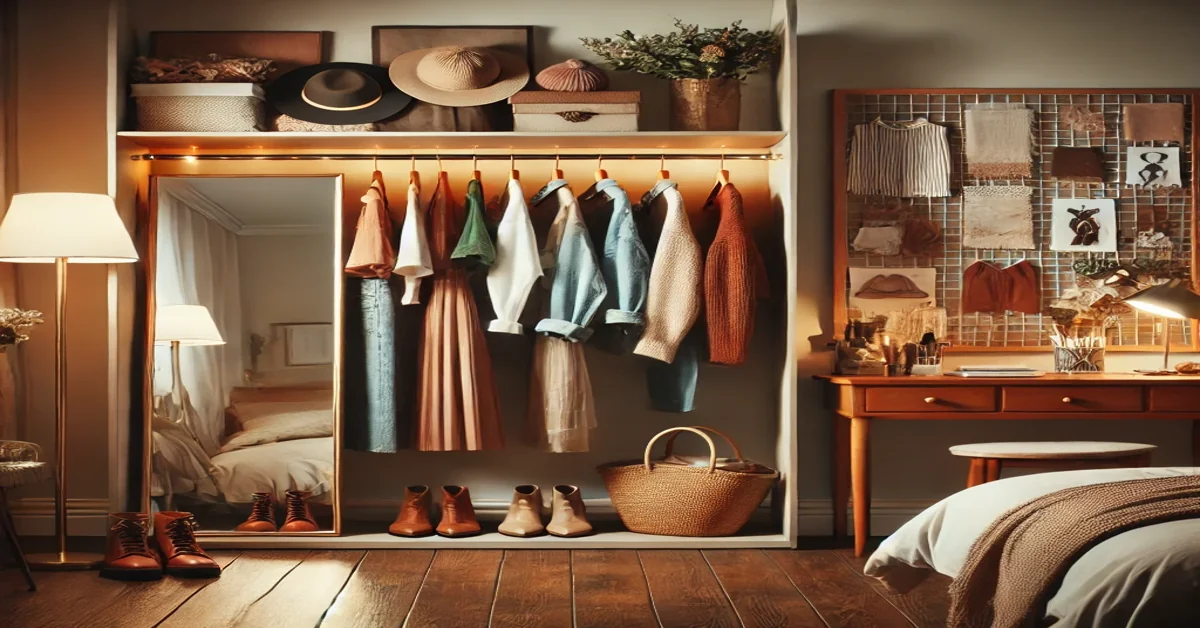Discovering your personal style is like creating a visual language that communicates who you are. Your aesthetic can evolve and grow with you and should be an extension of yourself, rather than a confinement you’re afraid to step out of. To build a look that truly reflects your personality, you simply need a blend of inspiration, experimentation, and self-awareness:
1. Start with Inspiration and Icons
The first step to discovering your style is looking for inspiration. Start by identifying style icons whose looks resonate with you—these can be anyone from celebrities and influencers to fictional characters. Think about why these figures inspire you; maybe it’s their color choices, shapes, or an effortlessly cool vibe.
For clothing, consider personalizing your inspiration by choosing looks that align with your body shape and lifestyle, rather than current trends (those change constantly anyway). Curating your style to fit your daily routine makes fashion both sustainable and enjoyable. And remember: the most flattering clothes are those that make you feel confident and comfortable.
When it comes to interior design, you can apply this exercise as well, thinking about the vibe you want to create in your space. Collect images, whether online or from magazines, that speak to the atmosphere you want at home. Are you drawn to boho interiors with layered textiles, or maybe minimalist spaces with sleek lines and neutral colors?
2. Create a Mood Board
Once you have a variety of inspirations, bring them together into a mood board. This can be a digital collage, a Pinterest board, or a physical layout that gathers all the looks, colors, and textures that resonate with you. Seeing your preferences side-by-side helps you spot patterns in color schemes, shapes, and design elements that might otherwise go unnoticed. The mood board is where you’ll start to see the building blocks of your personal style take shape.
In fashion, for instance, maybe you notice a preference for warm tones and earthy fabrics. Or perhaps you tend to lean toward monochrome palettes and structured silhouettes. Similarly, if you’re designing a home space, mood boards help you figure out what complements your aesthetic: from cozy, rustic touches to sleek and modern accents. The process of mood boarding can clarify your taste and help you focus on a cohesive aesthetic before committing to purchases.
3. Define Key Elements and Start to Have Fun
Now that you have a clearer idea of your style, it’s time to start experimenting. When it comes to fashion, try to find a few key items—like a favorite pair of jeans, a statement jacket, or versatile tops—that align with the elements you highlighted in your mood board. Experimentation is also a great strategy for makeup; if you’re drawn to bold eyeshadow colors or graphic eyeliner, test them out in low-key situations first to see what feels right. You can also experiment with accessories to subtly tweak your aesthetic before fully committing.
Interior design experimentation could mean starting with a few small décor pieces or an accent wall that matches your preferred color scheme. Testing these elements allows you to incorporate new ideas into your home or wardrobe gradually, rather than making big, costly changes all at once.
4. Make It Personal and Practical
Your personal aesthetic should fit not just your taste, but also your lifestyle. There’s no need to force yourself into trends that don’t suit your daily life, especially if comfort and practicality are priorities. For example, if you love high-glam fashion but work in a casual environment, you could adapt elements by adding luxe accessories to simple outfits. Similarly, if a full-beat glam makeup look isn’t feasible daily, focus on one striking element, like a bold lip color, that still makes a statement without feeling out of place.
In home décor, keep your space functional. If you adore the minimalism look but have kids or pets, opt for durable, easy-to-clean materials that still give the sleek vibe you love. Your aesthetic should enhance your life, not complicate it.
5. Allow Room for Growth and Change
As much as your personal style reflects who you are, it’s natural for tastes to change over time. Embrace this evolution; your aesthetic should grow with you. Perhaps a new interest or life change inspires you to add unexpected elements. Regularly reassess your mood board and inspirations to stay connected with what excites you.
Letting your aesthetic evolve can also mean taking a break from what’s “in” on social media to find out what truly resonates with you. Don’t be afraid to let go of pieces that no longer feel authentic.









